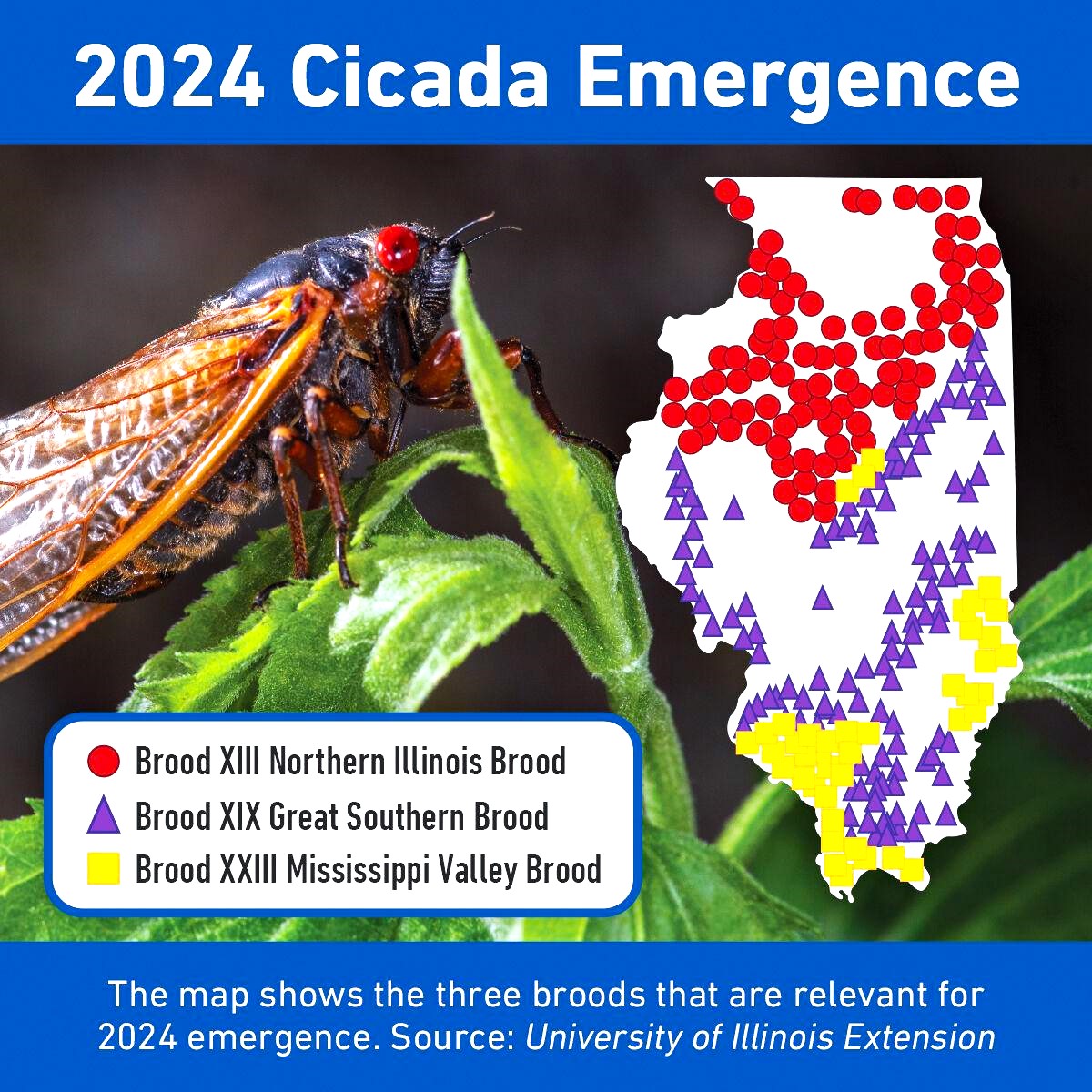
This man shows the three cicada broods that are relevant for 2024 emergence. Source: University of Illinois Extension. (Graphic by Illinois Farm Bureau)
Illinois will experience a rare phenomenon of nature this year as two broods of periodical cicadas are scheduled to emerge at the same time.
And this once-in-a-lifetime occurrence won’t happen again until 2245.
Kacie Athey, a specialty crop entomologist at the University of Illinois, said the Northern Illinois Brood that emerges every 17 years and the Great Southern Brood, which emerges every 13 years, will come out simultaneously for the first time since 1803. Stragglers from the Mississippi Valley Brood might also appear in 2024.
While the two broods will emerge at the same time, there will likely be only a few places in central Illinois, around Springfield, where they will emerge in the same area, according to the University of Illinois Extension.
Illinois residents should expect to see and hear them from late May to mid-June.
“They start coming out of the ground when the soil temperatures hits 64 degrees Fahrenheit at the depth that they’re actually at, which is 7 to 8 inches deep,” Athey told FarmWeek.
But what impact will these insects have on agriculture?
Illinois State Veterinarian Mark Ernst said they don’t pose a notable threat to livestock and University of Illinois Field Crop Entomologist Nick Seiter confirmed cicadas won’t harm row crops.
But Athey said tree fruit producers should keep an eye out for them.
“Cicadas do damage by cutting into small branches and laying eggs inside of them,” she said. “So if you are a tree fruit producer here in Illinois and you have young trees, you do need to protect them if cicadas come out in your orchard.”
Athey said the most harm will be to young trees but mature trees that are planted in high densities are also at a high risk for cicada damage. “Those trees really resemble young
